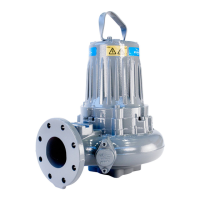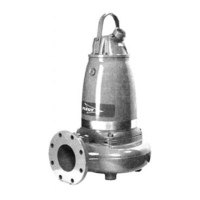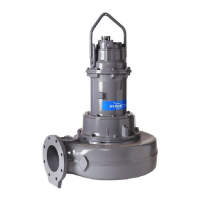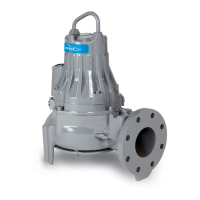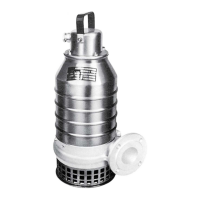How to fix signs of wear on the impeller, pump, and casing of Xylem Water Pump?
- LLori GonzalezAug 1, 2025
Replace the worn parts of the Xylem Water Pump.
How to fix signs of wear on the impeller, pump, and casing of Xylem Water Pump?
Replace the worn parts of the Xylem Water Pump.
What to do if the Xylem Water Pump runs but the motor protection trips?
If the Xylem Water Pump runs, but the motor protection trips, it could be due to several reasons. First, the motor protection might be set too low; in this case, adjust the motor protection according to the data plate and cable chart. Alternatively, the impeller might be difficult to rotate; clean the impeller, clear out the sump, and ensure the impeller is properly trimmed. Also, check the fuses and replace any that have tripped. If the fuses are intact, then notify a certified electrician.
Why does my Xylem Water Pump deliver too little or no water?
If your Xylem Water Pump delivers too little or no water, several factors could be at play. Ensure the impeller is rotating in the correct direction; if it's a 3-phase pump, transpose two phase leads. Check that all valves are set correctly and replace them if necessary, ensuring they are installed according to media flow and open correctly. Additionally, inspect for obstructions in the pipes and clean them to ensure free flow. Finally, check for leaks in the pipes and joints and seal them.
What to do if Xylem Flygt 3102 Water Pump starts-stops-starts in rapid sequence?
If the Xylem Water Pump starts and stops rapidly, it might be due to back-flow filling the sump to the start level again. Ensure the distance between the start and stop levels is sufficient and that the non-return valves are working correctly. Also, check that the length of the discharge pipe between the pump and the first non-return valve is sufficiently short. Another potential cause is a malfunction in the self-holding function of the contactor. Inspect the contactor connections, the voltage in the control circuit, the functioning of the stop-level regulator, and whether the voltage drop in the line at the starting surge causes the contactor's self-holding malfunction.
How to troubleshoot if Xylem Flygt 3102 Water Pump does not start?
If the Xylem Water Pump does not start, it could be due to an alarm signal triggered on the control panel. Check that the impeller rotates freely, the sensor indicators do not indicate an alarm, and the overload protection is not tripped. If the pump does not start automatically but can be started manually, verify that the start level regulator is functioning (clean or replace if necessary), all connections are intact, the relay and contactor coils are intact, and the control switch (Man/Auto) makes contact in both positions. Also, check the control circuit and functions.
What to do if Xylem Flygt 3102 Water Pump does not stop when a level sensor is used?
If the Xylem Water Pump doesn't stop when a level sensor is used, it might be because the pump can't empty the sump to the stop level. Check for leaks in the piping or discharge connection, ensure the impeller isn't clogged, and verify the non-return valves are functioning properly. Also, make sure the pump has adequate capacity. Another reason could be a malfunction in the level-sensing equipment; clean the level regulators, check their functioning, check the contactor and the control circuit, and replace any defective items. Lastly, the stop level might be set too low, so raise it.
What to do if the liquid level is too low in Xylem Flygt 3102 Water Pump?
• Check that the level sensor is set correctly. • Depending on the installation type, add a means for priming the Xylem Water Pump, such as a foot valve.
Defines safety terminology and symbols used in the manual to prevent hazards.
General precautions and steps for making electrical connections.
Step-by-step instructions for starting the pump safely.
Safety precautions to follow before performing any maintenance work.
Required tools and general precautions for impeller replacement.
Guidelines for electrical troubleshooting, emphasizing safety and qualified personnel.
Troubleshooting steps for when the pump fails to start automatically.
Troubleshooting steps for when the pump fails to stop with a level sensor.
Troubleshooting steps when the pump runs but the motor protection trips.
Troubleshooting steps for when the pump delivers insufficient or no water.
Defines safety terminology and symbols used in the manual to prevent hazards.
General precautions and steps for making electrical connections.
Step-by-step instructions for starting the pump safely.
Safety precautions to follow before performing any maintenance work.
Required tools and general precautions for impeller replacement.
Guidelines for electrical troubleshooting, emphasizing safety and qualified personnel.
Troubleshooting steps for when the pump fails to start automatically.
Troubleshooting steps for when the pump fails to stop with a level sensor.
Troubleshooting steps when the pump runs but the motor protection trips.
Troubleshooting steps for when the pump delivers insufficient or no water.
| Protection Class | IP68 |
|---|---|
| Maximum Submersion Depth | 20 m |
| Maximum Liquid Temperature | 40°C |
| Type | Submersible Pump |
| Applications | Wastewater, sewage, drainage |
| Materials | Cast iron |
| Frequency | 50 Hz, 60 Hz (depending on model and region) |
| Seal Type | Mechanical seal |







